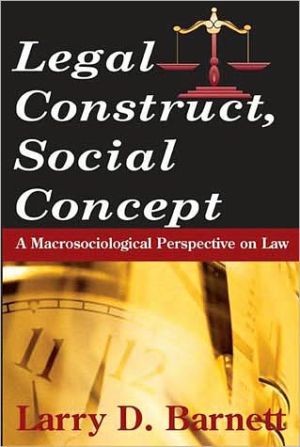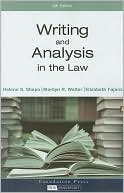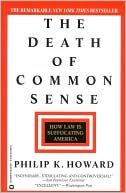Legal Construct, Social Concept: A Macrosociological Perspective on Law
Based on sophisticated demographic analysis, Legal Construct, Social Concept argues that legal doctrine on social issues is shaped by the needs and values of society rather than by individuals and interest groups and that it evolves in response to social change but has little impact on that change. The book also explains why a substantial body of social science research has found that although law may be effective for some types of economic problems, its impact on social problems is generally...
Search in google:
Based on sophisticated demographic analysis, Legal Construct, Social Concept argues that legal doctrine on social issues is shaped by the needs and values of society rather than by individuals and interest groups and that it evolves in response to social change but has little impact on that change. The book also explains why a substantial body of social science research has found that although law may be effective for some types of economic problems, its impact on social problems is generally small and of brief duration. At least in the United States, legal doctrine seems to operate primarily to provide symbols that enhance commitment to the social system and increase the cohesiveness of the system.Barnett's approach to legal thought derives from the practices and assumptions of the social sciences, particularly sociology, and not from those of critical legal studies. His main concern is with social issues issues that substantively differ from economic issues. In addressing legal thought on social problems with the conceptual framework and quantitative techniques of macrosociology, he considers a topic that is infrequently investigated and employs an approach that is infrequently used.To illustrate this thesis, Barnett presents data on social patterns relevant to three current issues: sex discrimination, age discrimination, and the availability of contraception and abortion. His analyses of these data are compared to constitutional philosophy, judicial rulings, and federal statutes. Barnett then turns from the evolution of legal doctrine in the past to its possible change in the future and considers whether active forms of euthanasia are likely to be legalized. He concludes with an exploration of additional issues for future research and theory. Lawrence M. Friedman This book has a simple thesis. Law, according to Barnett, is much more a dependent than an independent variable. Legal doctrine changes when society is ready for it to change, and not otherwise. People, however, tend to think law is a powerful weapon for change, and they overestimate what it can accomplish; in fact, says Barnett, law is not an "effective means for treating social problems" (p. 62). Apparently, law IS able to make something of a mark on economic problems -- it can "control" to some extent "the medium of exchange and arrangements for increasing wealth" (p. 162); but on such "social" matters as marriage and divorce, sex, discrimination against old people, euthanasia -- issues which Barnett deals with in this book, it is quite ineffective. So far, so good. The problem lies in the demonstration. Barnett is convinced that he can prove his thesis on the "macrosociological" level, that is, through aggregate, longitudinal data. Hence much of the book is taken up with the minute examination of statistical series -- trying, for example, to explain why Congress passed age discrimination laws by tieing enactment to figures on the percentage of men in the labor force over a certain age; or connecting sex discrimination laws with rise and fall of college enrollment rates of men and women. These attempts, frankly, strike me as much too simplistic. They also rest on an assumption, which most readers will simply reject, that the legal system automatically responds to what society "needs." "Needs" is actually Barnett's own word; and he is quite serious about it. Law and legal thought, he says, respond "to the needs and values of society" (p. 17). Or again, at the end of the book, he distinguishes between "social conditions" and "societal needs." "Conditions" are "phenomena that reduce the efficiency and effectiveness of a society;" while needs are "requirements of a society that must be satisfied if the system is to maintain itself." Legal doctrine "reflects societal needs directly and societal conditions only indirectly" (p. 167). This point, if I understand it correctly, is both too optimistic and too mechanical. Societies can be quite blind as to what they really "need;" and they may and indeed do act in ways that look quite crazy in hindsight. I don't doubt for a minute that large-scale social changes have an impact on the legal system. This is, in fact, the basic premise of studies of law and society. But the real question is HOW; and through what mechanisms; and in what sequence. Here I think Barnett does not help us as much as one might like. Barnett is quite careful about statistics; less careful, I fear, about what these statistics measure. For example, in his chapter on euthanasia, he goes out on a limb and predicts that laws against euthanasia are likely to weaken or vanish. Why? Because public opinion is in favor of euthanasia. The evidence for this comes from Gallup polls, which have included a question on euthanasia since 1947. The question is this: "When a person has a disease that cannot be cured, do you think doctors should be allowed by law to end the patient's life by some painless means if the patient and his family request it?" (p.141). But what does this question mean to the people who answer it? (I myself would have trouble with the question, although I think if pressed I would have to say yes.) What is a "disease that cannot be cured?" Does it matter if the patient is or is not near the end? What precise situations were the respondents thinking of? How did the people who answered the question understand it? Also, how deeply did they feel about the subject? If they said yes, did they say yes out of passion, or were they basically indifferent with a slight edge to the yes side? What about the people who said no? Surprisingly, Barnett seems unaware of or uninterested in problems of interpreting evidence from polls; or in the conceptual issues of defining "public opinion;" or in the relationship between this kind of opinion and public, political action. Page 94 follows: I have reservations, too, about his notion that laws have no impact on "social" problems. He may well be right; but this is a complex issue and his data do not really prove the case. Take the Age Discrimination in Employment Act. Barnett marshals evidence that ADEA had no "appreciable impact on labor force participation"; senior citizens did not work in greater numbers than before. He concludes that "labor force involvement...is not a function of a statute banning discrimination but, rather, of large-scale social forces" (p. 90). We can concede this point. Still, was it the purpose of ADEA to increase the number of 64 year olds who hold down jobs? Or was the purpose rather to end discrimination against those who DO want to work? You cannot measure a lesser degree of discrimination -- or an increase in social justice; or, perhaps, a lessening of age-stereotypes -- with this kind of blunt instrument. Anti-discrimination laws may be effective if they give people a chance to get back at those who mistreat them; or if they increase the quantum of social justice. Large-scale aggregate statistics, about work-force participation, do not necessarily tell us if this is actually happening. The point of ADEA was to let older people work if they WANT to; if many or most such people choose to retire, so be it. After all, divorce law reform is not a failure simply because the divorce rate stays the same. The book is clear and concise; and it attacks an important issue. That is all to the good. I applaud the enterprise, despite reservations about the way it is carried out.
PrefaceA Note on Citation Style1Introduction1Data Types and Causal Inferences5Science and Legal Thought72The Thesis13A Macrosociological Approach14Equal Protection: An illustration19Knowledge and Population Size as Societal Attributes223Gender47Equal Rights Amendment554Age73Factors Affecting the Social Definition of Age75Age Discrimination in Employment Act785Contraception and Abortion99The Cases99The Data102A Preface to the Data Analysis106The Contraception Cases107The Abortion Cases1126Euthanasia139Societal Forces Promoting Euthanasia140The Impact of Statutes Banning Euthanasia1527Issues for Research and Theory161Theoretical Issues that Arise from Existing Research162A Priori Theoretical Issues167Index175
\ From the Publisher“Legal Construct, Social Concept, by Larry D. Barnett, tackles an issue fundamental to scientific research and to policy-making: the relationship between legal doctrine and social context.” —Robin Stryker, American Journal of Sociology\ \ \ \ \ Lawrence M. FriedmanThis book has a simple thesis. Law, according to Barnett, is much more a dependent than an independent variable. Legal doctrine changes when society is ready for it to change, and not otherwise. People, however, tend to think law is a powerful weapon for change, and they overestimate what it can accomplish; in fact, says Barnett, law is not an "effective means for treating social problems" p. 62. Apparently, law IS able to make something of a mark on economic problems -- it can "control" to some extent "the medium of exchange and arrangements for increasing wealth" p. 162; but on such "social" matters as marriage and divorce, sex, discrimination against old people, euthanasia -- issues which Barnett deals with in this book, it is quite ineffective. So far, so good. The problem lies in the demonstration. Barnett is convinced that he can prove his thesis on the "macrosociological" level, that is, through aggregate, longitudinal data. Hence much of the book is taken up with the minute examination of statistical series -- trying, for example, to explain why Congress passed age discrimination laws by tieing enactment to figures on the percentage of men in the labor force over a certain age; or connecting sex discrimination laws with rise and fall of college enrollment rates of men and women. These attempts, frankly, strike me as much too simplistic. They also rest on an assumption, which most readers will simply reject, that the legal system automatically responds to what society "needs." "Needs" is actually Barnett's own word; and he is quite serious about it. Law and legal thought, he says, respond "to the needs and values of society" p. 17. Or again, at the end of the book, he distinguishes between "social conditions" and "societal needs." "Conditions" are "phenomena that reduce the efficiency and effectiveness of a society;" while needs are "requirements of a society that must be satisfied if the system is to maintain itself." Legal doctrine "reflects societal needs directly and societal conditions only indirectly" p. 167. This point, if I understand it correctly, is both too optimistic and too mechanical. Societies can be quite blind as to what they really "need;" and they may and indeed do act in ways that look quite crazy in hindsight. I don't doubt for a minute that large-scale social changes have an impact on the legal system. This is, in fact, the basic premise of studies of law and society. But the real question is HOW; and through what mechanisms; and in what sequence. Here I think Barnett does not help us as much as one might like. Barnett is quite careful about statistics; less careful, I fear, about what these statistics measure. For example, in his chapter on euthanasia, he goes out on a limb and predicts that laws against euthanasia are likely to weaken or vanish. Why? Because public opinion is in favor of euthanasia. The evidence for this comes from Gallup polls, which have included a question on euthanasia since 1947. The question is this: "When a person has a disease that cannot be cured, do you think doctors should be allowed by law to end the patient's life by some painless means if the patient and his family request it?" p.141. But what does this question mean to the people who answer it? I myself would have trouble with the question, although I think if pressed I would have to say yes. What is a "disease that cannot be cured?" Does it matter if the patient is or is not near the end? What precise situations were the respondents thinking of? How did the people who answered the question understand it? Also, how deeply did they feel about the subject? If they said yes, did they say yes out of passion, or were they basically indifferent with a slight edge to the yes side? What about the people who said no? Surprisingly, Barnett seems unaware of or uninterested in problems of interpreting evidence from polls; or in the conceptual issues of defining "public opinion;" or in the relationship between this kind of opinion and public, political action. Page 94 follows: I have reservations, too, about his notion that laws have no impact on "social" problems. He may well be right; but this is a complex issue and his data do not really prove the case. Take the Age Discrimination in Employment Act. Barnett marshals evidence that ADEA had no "appreciable impact on labor force participation"; senior citizens did not work in greater numbers than before. He concludes that "labor force involvement...is not a function of a statute banning discrimination but, rather, of large-scale social forces" p. 90. We can concede this point. Still, was it the purpose of ADEA to increase the number of 64 year olds who hold down jobs? Or was the purpose rather to end discrimination against those who DO want to work? You cannot measure a lesser degree of discrimination -- or an increase in social justice; or, perhaps, a lessening of age-stereotypes -- with this kind of blunt instrument. Anti-discrimination laws may be effective if they give people a chance to get back at those who mistreat them; or if they increase the quantum of social justice. Large-scale aggregate statistics, about work-force participation, do not necessarily tell us if this is actually happening. The point of ADEA was to let older people work if they WANT to; if many or most such people choose to retire, so be it. After all, divorce law reform is not a failure simply because the divorce rate stays the same. The book is clear and concise; and it attacks an important issue. That is all to the good. I applaud the enterprise, despite reservations about the way it is carried out.\ \








